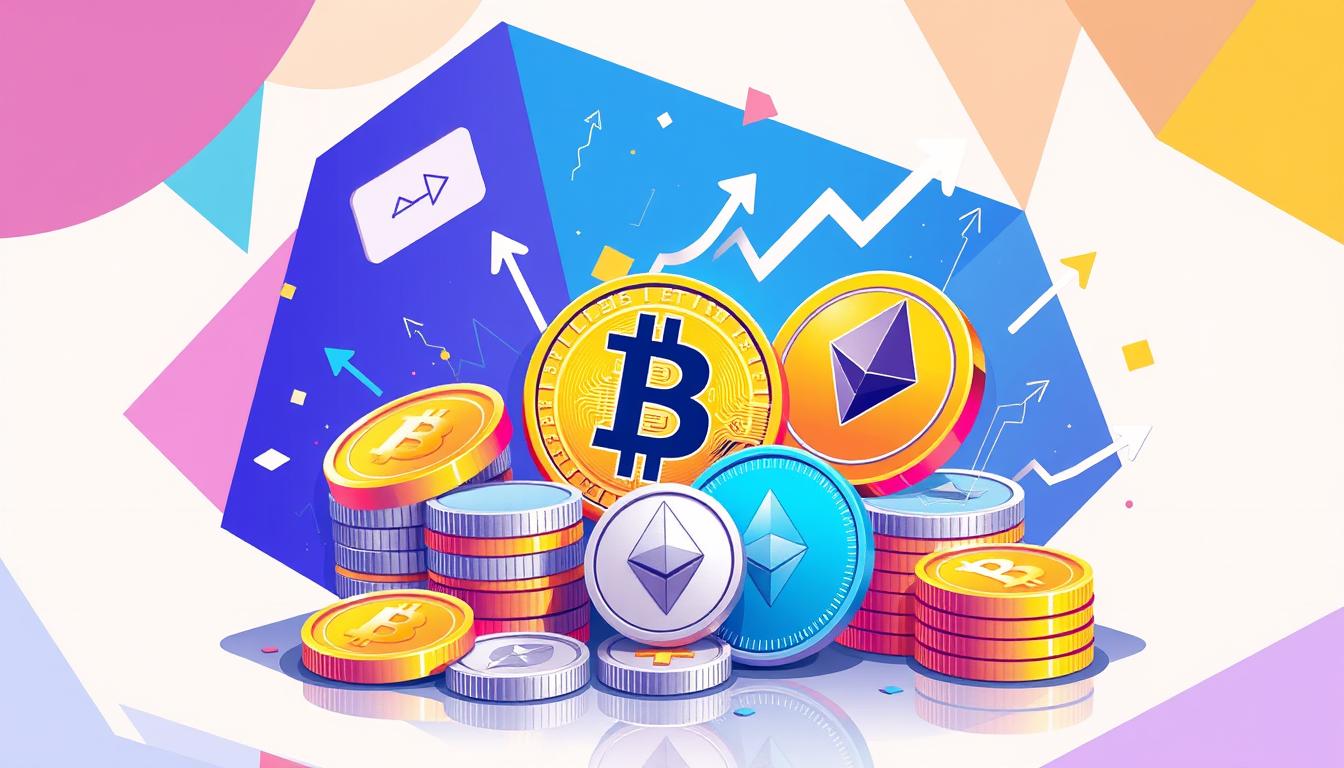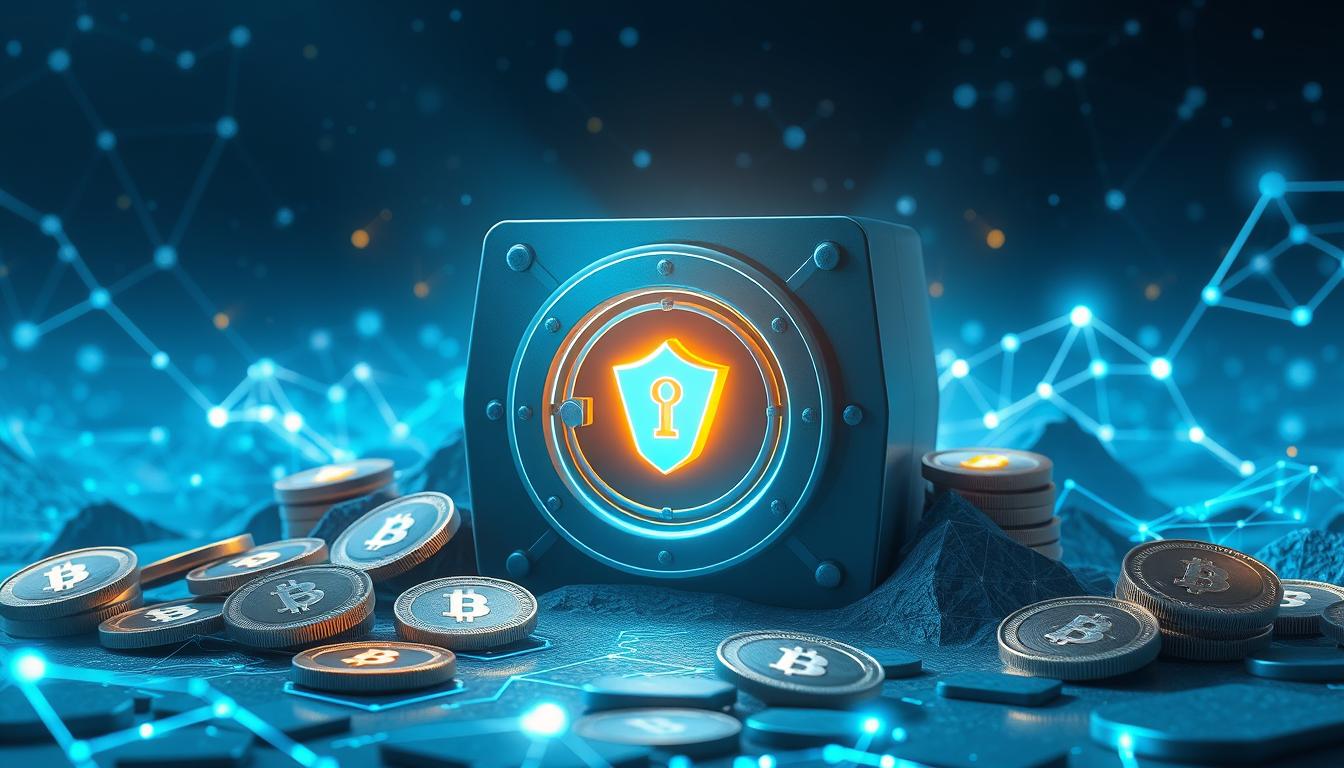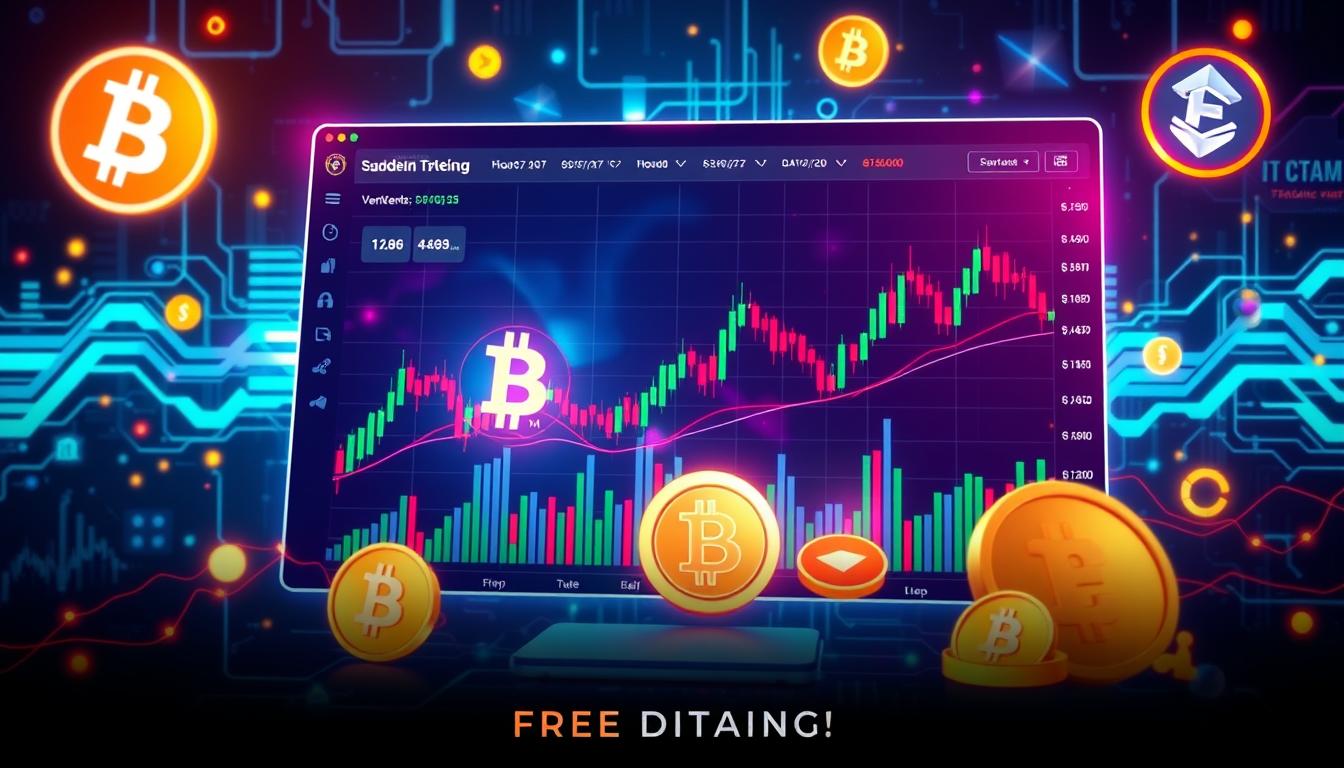Now Reading: Promising Altcoins for Long-Term Growth: Top Picks
- 01
Promising Altcoins for Long-Term Growth: Top Picks
Promising Altcoins for Long-Term Growth: Top Picks

In the rapidly evolving world of cryptocurrencies, investors are constantly on the lookout for the next big thing. While Bitcoin and Ethereum have captured the mainstream attention, the altcoin market has been experiencing a surge of growth and innovation. This article will explore some of the most promising altcoins that have the potential for long-term success and substantial gains.
By delving into the factors driving the growth of altcoins, their unique features, and their future development prospects, we aim to provide readers with a comprehensive understanding of the top altcoin picks for long-term investment. This analysis will equip investors with the knowledge needed to make informed decisions and potentially capitalize on the lucrative opportunities presented by the ever-evolving cryptocurrency landscape.
Key Takeaways
- Altcoins offer investors alternatives to the dominant cryptocurrencies like Bitcoin and Ethereum.
- Factors such as blockchain technology, real-world use cases, and market demand drive the growth of promising altcoins.
- Proper due diligence, risk management, and portfolio diversification are crucial when investing in altcoins.
- The article will delve into the top altcoin picks and their unique characteristics, providing a comprehensive analysis for investors.
Exploring altcoins with strong fundamentals, innovative features, and long-term growth potential can lead to rewarding investment opportunities.
Understanding the Cryptocurrency Market
The cryptocurrency market has evolved significantly since the inception of Bitcoin, the pioneering [https://cryptomaximal.com/top-altcoins-for-2025/] blockchain technology. As the industry matures, a growing number of alternative cryptocurrencies, known as altcoins, have emerged to challenge Bitcoin’s dominance and address various use cases.
Evolution of Cryptocurrencies
The cryptocurrency landscape has witnessed a remarkable transformation over the past decade. While Bitcoin remains the most prominent and widely-adopted digital asset, the rise of altcoins has diversified the [https://cryptomaximal.com/top-altcoins-for-2025/] crypto market, introducing new technologies, financial applications, and innovative solutions.
Factors Driving Altcoin Growth
Several key factors have contributed to the increasing popularity and growth of altcoins. The advent of decentralized finance (DeFi) has sparked a surge in the demand for alternative blockchain-based solutions, as investors and developers seek to leverage the benefits of [https://cryptomaximal.com/top-altcoins-for-2025/] blockchain technology beyond the traditional financial system. Additionally, the emergence of the Metaverse ecosystem and the growing interest in non-fungible tokens (NFTs) have further fueled the demand for innovative [https://cryptomaximal.com/top-altcoins-for-2025/] cryptocurrencies and decentralized applications.
As the crypto market trends continue to evolve, the [https://cryptomaximal.com/top-altcoins-for-2025/] altcoin landscape is expected to play an increasingly significant role in shaping the future of the digital asset ecosystem. Investors and enthusiasts alike are closely monitoring the [https://cryptomaximal.com/top-altcoins-for-2025/] blockchain technology advancements and the emergence of new use cases that could drive the next wave of [https://cryptomaximal.com/top-altcoins-for-2025/] crypto market growth.
What are the most promising altcoins for long-term growth?
As the cryptocurrency market continues to evolve, investors are increasingly looking for altcoins with the potential for long-term growth. Altcoins, cryptocurrencies other than Bitcoin, offer a diverse range of innovative features and use cases that can drive adoption and price appreciation over time.
When analyzing the most promising altcoins, several key factors are considered, such as the project’s technological advancements, real-world applications, adoption rates, and market performance. By examining these criteria, we can identify altcoins that stand out in the crowded crypto landscape and present compelling investment opportunities.
| Altcoin | Key Features | Potential for Long-Term Growth |
|---|---|---|
| Ethereum (ETH) | Smart contract platform, decentralized applications (DApps) | Continued growth in DeFi, enterprise adoption, and Ethereum 2.0 upgrades |
| Cardano (ADA) | Peer-reviewed blockchain, smart contracts, decentralized governance | Expanding ecosystem, focus on developing nations, potential for widespread adoption |
| Solana (SOL) | High-performance blockchain, Proof-of-History consensus, scalability | Rapid ecosystem growth, DeFi integration, and potential to challenge Ethereum |
These are just a few examples of the most promising altcoins for long-term growth. As the crypto market continues to evolve, investors should stay informed about the latest trends, technological advancements, and regulatory changes that may impact the performance of these and other altcoins.
“The future of finance is not just about Bitcoin; it’s about the entire ecosystem of altcoins that are driving innovation and solving real-world problems.”
Ethereum: The Smart Contract Powerhouse
Ethereum, the second-largest cryptocurrency by market capitalization, has emerged as a dominant player in the smart contract platforms landscape. Its innovative blockchain technology has enabled the development of a wide range of decentralized applications (DApps), revolutionizing the way we interact with digital services.
Decentralized Applications (DApps)
Ethereum’s smart contract functionality has paved the way for the creation of DApps, which are applications that run on a decentralized network rather than a centralized server. These DApps span various industries, including finance, gaming, social media, and more. They offer users greater transparency, security, and control over their data and transactions, making Ethereum a crucial player in the shift towards a more decentralized digital ecosystem.
Ethereum 2.0 and Scalability Solutions
To address the scalability challenges faced by the Ethereum network, the Ethereum Foundation is currently developing Ethereum 2.0, a major upgrade that aims to improve the network’s performance, security, and energy efficiency. This upgrade will introduce new features, such as sharding and proof-of-stake consensus, which are expected to significantly increase the network’s transaction throughput and reduce gas fees, making Ethereum more accessible for a broader range of decentralized applications.
| Feature | Ethereum | Ethereum 2.0 |
|---|---|---|
| Consensus Mechanism | Proof-of-Work | Proof-of-Stake |
| Scalability | Limited | Improved through sharding |
| Energy Efficiency | High energy consumption | Reduced energy consumption |
The combination of Ethereum’s position as a leading smart contract platform and the upcoming Ethereum 2.0 upgrade positions the network as a powerful and versatile blockchain solution, further solidifying its role in the cryptocurrency and decentralized application ecosystem.
Cardano: The Peer-Reviewed Blockchain
In the ever-evolving world of cryptocurrency, Cardano has emerged as a blockchain platform that sets itself apart through its rigorous, peer-reviewed approach to development. Launched in 2017, Cardano has gained significant attention for its focus on academic research and its unique proof-of-stake consensus mechanism, which aims to address the scalability and sustainability challenges faced by traditional blockchain networks.
Cardano’s development process is guided by a team of academics, researchers, and engineers who collaborate to ensure the platform’s technical integrity and long-term viability. This commitment to academic rigor is reflected in Cardano’s layered architecture, which includes a settlement layer for processing transactions and a computational layer for executing smart contracts.
One of Cardano’s key features is its proof-of-stake consensus mechanism, known as Ouroboros. This protocol is designed to be more energy-efficient and secure than the proof-of-work systems used by Bitcoin and other early cryptocurrencies. By rewarding stakeholders who hold and validate transactions, Ouroboros aims to incentivize long-term participation and reduce the environmental impact associated with mining-based consensus mechanisms.
As the Cardano ecosystem continues to evolve, the platform has attracted the attention of developers, researchers, and investors alike, who see its potential for driving the wider adoption of blockchain technology. With its emphasis on academic rigor, energy efficiency, and long-term sustainability, Cardano is poised to play a significant role in the future of cryptocurrency and blockchain-based applications.
| Key Cardano Features | Description |
|---|---|
| Peer-Reviewed Development | Cardano’s development process is guided by a team of academics and researchers, ensuring a strong focus on technical integrity and long-term viability. |
| Proof-of-Stake Consensus | Cardano’s Ouroboros protocol is a proof-of-stake consensus mechanism designed to be more energy-efficient and secure than proof-of-work systems. |
| Layered Architecture | Cardano’s platform consists of a settlement layer for transactions and a computational layer for smart contracts, allowing for greater scalability and flexibility. |
| Cryptocurrency Adoption | Cardano’s focus on academic research and sustainable blockchain technology has drawn the attention of developers, researchers, and investors interested in the future of cryptocurrencies and blockchain applications. |
“Cardano’s peer-reviewed approach to blockchain development sets it apart in the cryptocurrency market, as it aims to deliver a more robust and sustainable platform for the long-term growth of the industry.”
Solana: The High-Performance Blockchain
In the ever-evolving world of blockchain technology, Solana has emerged as a promising player, known for its remarkable speed and scalability. This high-performance blockchain has been making waves in the crypto community, offering solutions to the age-old challenges of transaction throughput and network congestion.
Proof-of-History Consensus Mechanism
At the heart of Solana’s success is its innovative Proof-of-History (PoH) consensus mechanism. Unlike traditional blockchain protocols that rely on Proof-of-Work or Proof-of-Stake, Solana’s PoH leverages a unique timestamping system to achieve unprecedented transaction speeds. This decentralized and distributed system allows the network to process thousands of transactions per second, a feat that was previously unattainable in the world of blockchain technology.
Solana’s Ecosystem and Developments
Solana’s ecosystem has been steadily growing, attracting the attention of developers and investors alike. The network has seen the launch of numerous decentralized applications (dApps), ranging from decentralized finance (DeFi) platforms to non-fungible token (NFT) marketplaces. Additionally, Solana has been exploring scalability solutions to further enhance its capabilities, positioning it as a viable contender in the race for mainstream crypto adoption rates.
| Key Feature | Solana |
|---|---|
| Consensus Mechanism | Proof-of-History |
| Transaction Speed | Thousands of transactions per second |
| Ecosystem | Thriving with numerous dApps |
| Scalability | Exploring advanced solutions |
As Solana continues to evolve and expand its capabilities, it remains a blockchain worth watching in the broader cryptocurrency landscape. Its innovative approach to consensus and its growing ecosystem suggest a promising future for this high-performance blockchain.
Polkadot: The Multi-Chain Interoperability Solution
In the ever-evolving world of cryptocurrencies, Polkadot stands out as a blockchain network that focuses on blockchain interoperability. This innovative platform aims to facilitate seamless communication and data sharing among different blockchains, fostering a more interconnected and diverse cryptocurrency ecosystem.
Parachains and Parathread Design
Polkadot’s unique architecture revolves around the concept of “parachains” and “parathreads.” Parachains are specialized blockchains that can be integrated into the Polkadot network, each with its own set of features and functionalities. This modular approach allows for the development of diverse applications, from decentralized finance (DeFi) protocols to niche blockchain solutions.
Parathreads, on the other hand, are a more flexible and cost-effective alternative to parachains, catering to projects with lower resource requirements or intermittent usage. By offering both parachains and parathreads, Polkadot aims to create a versatile and inclusive ecosystem, enabling a wide range of blockchain-based applications to thrive and collaborate.
| Feature | Parachains | Parathreads |
|---|---|---|
| Purpose | Dedicated blockchains within the Polkadot network | Flexible, cost-effective alternatives to parachains |
| Functionality | Specialized features and applications | Lower resource requirements or intermittent usage |
| Collaboration | Seamless integration and data sharing | Participate in the Polkadot ecosystem |
By embracing the Polkadot model of parachains and parathreads, the platform aims to foster a thriving and interconnected blockchain interoperability ecosystem, where diverse projects can collaborate, share data, and collectively drive the growth of the decentralized finance (DeFi) landscape.
“Polkadot’s mission is to connect the specialized blockchains of tomorrow into a heterogeneous multi-chain network.”
Binance Coin: The Utility Token of the Binance Ecosystem
Binance Coin (BNB) is the native token of the Binance cryptocurrency exchange, one of the largest and most influential platforms in the crypto market. As a utility token, BNB serves a crucial role within the Binance ecosystem, providing users with a range of practical applications and benefits.
The primary use case of Binance Coin is to facilitate transactions and facilitate the payment of fees on the Binance crypto exchange. Users can leverage BNB to pay trading fees, withdrawal fees, and other service charges on the platform, often at a discounted rate compared to using other cryptocurrencies or fiat currencies.
| Feature | Description |
|---|---|
| Trading Fee Discounts | Binance Coin holders can enjoy up to a 25% discount on trading fees when using BNB to pay for transactions. |
| Ecosystem Utility | BNB can be used to pay for a variety of services within the Binance ecosystem, such as Launchpad token sales, Binance Loans, and Binance Pay. |
| Binance Ecosystem Development | A portion of the Binance Coin supply is used to fund the development and growth of the Binance ecosystem, including new product offerings and partnerships. |
The utility and demand for Binance Coin have contributed to its impressive price appreciation over the years. As the Binance crypto exchange continues to expand and attract more users, the demand for BNB is expected to grow, potentially leading to long-term appreciation in its value.
“Binance Coin is a unique cryptocurrency that offers a diverse range of practical applications within the Binance ecosystem, making it a valuable asset for anyone participating in the broader crypto market.”
Overall, Binance Coin’s position as the utility token of the Binance ecosystem, combined with its growing use cases and demand, make it a compelling altcoin to consider for long-term investment in the crypto market.
Exploring Decentralized Finance (DeFi) Altcoins
The rise of decentralized finance (DeFi) has ushered in a new era of innovative altcoins that are transforming the cryptocurrency landscape. Two such projects that have garnered significant attention are Uniswap, a decentralized exchange protocol, and Aave, a decentralized lending platform.
Uniswap and Automated Market Makers
Uniswap is a leading decentralized exchange (DEX) that utilizes an automated market maker (AMM) model. AMMs eliminate the need for traditional order books, instead relying on liquidity pools where users can swap tokens seamlessly. This innovative approach has made Uniswap a popular choice for trading a wide range of cryptocurrencies, including altcoins.
Aave and Decentralized Lending
Aave is a decentralized lending platform that allows users to lend, borrow, and earn interest on their digital assets. By leveraging smart contracts and liquidity pools, Aave enables a permissionless and censorship-resistant lending ecosystem, catering to the growing demand for decentralized finance (DeFi) services.
These DeFi-focused altcoins, such as Uniswap and Aave, have the potential to drive long-term growth in the cryptocurrency market. As the adoption of decentralized finance continues to grow, these innovative projects are well-positioned to capitalize on the rising demand for seamless and secure financial services on the blockchain.
“The rise of decentralized finance (DeFi) has led to the emergence of several promising altcoins that are transforming the cryptocurrency landscape.”
Privacy Coins: Monero and Zcash
In the evolving world of cryptocurrencies, privacy coins have gained significant attention for their focus on transactional anonymity and safeguarding user privacy. Two prominent examples of these privacy-centric altcoins are Monero and Zcash.
Monero, launched in 2014, is known for its advanced encryption techniques, such as ring signatures and stealth addresses, which obscure the sender, receiver, and transaction amounts. This level of privacy has made Monero a popular choice among those seeking to protect their cryptocurrency privacy.
Zcash, on the other hand, utilizes a different approach called zero-knowledge proofs, which allow users to validate transactions without revealing the underlying details. This technology, known as zk-SNARKs, has made Zcash a viable alternative for those seeking enhanced privacy coins.
| Feature | Monero | Zcash |
|---|---|---|
| Consensus Mechanism | Proof-of-Work | Proof-of-Work |
| Privacy Techniques | Ring Signatures, Stealth Addresses | zk-SNARKs |
| Total Supply | Unlimited | 21 million |
| Use Cases | Payments, Transactions | Payments, Transactions |
While Monero and Zcash have gained traction in the cryptocurrency space, they have also faced regulatory challenges and scrutiny due to their emphasis on privacy. As the adoption of privacy coins continues to evolve, it will be crucial for investors and users to understand the unique features, use cases, and potential risks associated with these specialized altcoins.
Layer-2 Scaling Solutions: Polygon and Lightning Network
As the cryptocurrency market continues to grow, the need for scalable solutions has become increasingly important. Two prominent layer-2 scaling projects that have emerged to address this challenge are Polygon, an Ethereum sidechain, and the Lightning Network, a payment protocol built on top of Bitcoin.
Polygon’s Ethereum Sidechain Scaling
Polygon, formerly known as Matic Network, is a layer-2 scaling solution that operates as an Ethereum sidechain. It aims to enhance the scalability of the Ethereum network by providing faster and cheaper transactions. Polygon achieves this by leveraging its own proof-of-stake consensus mechanism, which allows for quicker block times and reduced gas fees compared to the Ethereum mainnet.
- Polygon enables developers to build and deploy decentralized applications (dApps) on its sidechain, benefiting from its improved scalability and lower transaction costs.
- The Polygon ecosystem has seen a significant influx of projects, ranging from decentralized finance (DeFi) protocols to non-fungible token (NFT) marketplaces, further driving the adoption of layer-2 scaling solutions.
The success of Polygon’s scalability efforts has positioned it as a prominent player in the Ethereum ecosystem, offering a cost-effective and efficient solution for developers and users alike.
Metaverse and Gaming Altcoins
The metaverse, a concept that blends virtual and physical worlds, has sparked a surge of interest in blockchain-based virtual environments and gaming platforms. Two prominent altcoins that have emerged in this rapidly evolving space are Decentraland and The Sandbox.
Decentraland: The Virtual World Powered by Blockchain
Decentraland is a 3D virtual world built on the Ethereum blockchain, where users can create, experience, and monetize content and applications. The platform’s native token, MANA, is used for purchasing digital land, known as LAND, as well as other in-world items and services. Decentraland’s vision is to create an immersive, decentralized virtual environment where users have full ownership and control over their digital assets.
The Sandbox: Empowering Creators in the Metaverse
The Sandbox is another popular metaverse and gaming altcoin that allows users to build, own, and monetize their virtual experiences. The platform’s SAND token is used for purchasing digital land, known as LAND, as well as for in-game transactions and asset creation. The Sandbox aims to empower a community of creators by providing them with the tools and resources to develop and publish their own interactive experiences within the metaverse.
| Altcoin | Overview | Unique Features | Market Capitalization (as of June 2023) |
|---|---|---|---|
| Decentraland (MANA) | Ethereum-based 3D virtual world | Full user ownership and control over digital assets | $1.8 billion |
| The Sandbox (SAND) | Ethereum-based metaverse and gaming platform | Empowering creators to develop and monetize their own experiences | $2.3 billion |
As the metaverse and gaming sectors continue to evolve, Decentraland and The Sandbox have emerged as two of the most promising altcoins in this rapidly growing space. With their focus on user ownership, content creation, and immersive digital experiences, these platforms offer compelling investment opportunities for those interested in the intersection of blockchain, virtual worlds, and the future of gaming.
Evaluating Altcoin Investment Risks
As the cryptocurrency market continues to evolve, investors must carefully consider the risks associated with altcoin investments. The altcoin landscape is marked by both promising long-term growth potential and significant regulatory concerns and adoption challenges.
Regulatory Concerns
One of the primary risks in the altcoin market is the regulatory uncertainty surrounding cryptocurrencies. Governments worldwide are grappling with how to approach the regulation of digital assets, leading to a patchwork of laws and policies that can significantly impact the value and viability of altcoins. Investors must stay informed about the ever-changing regulatory landscape and its potential implications for their altcoin investments.
Adoption Challenges
Another crucial factor to consider is the level of mainstream adoption for altcoins. While some altcoins have gained significant traction, the overall adoption of cryptocurrencies remains relatively low compared to traditional financial instruments. Factors such as user education, technological barriers, and competition from established payment systems can hinder the widespread adoption of altcoins, posing a risk to their long-term growth potential.
| Altcoin Investment Risks | Description |
|---|---|
| Regulatory Concerns | Governments worldwide are still grappling with how to regulate cryptocurrencies, leading to a patchwork of laws and policies that can impact the value and viability of altcoins. |
| Adoption Challenges | The overall adoption of cryptocurrencies remains relatively low compared to traditional financial instruments, hindering the widespread use of altcoins. |
| Market Volatility | The cryptocurrency market is known for its high volatility, which can lead to significant price fluctuations and investment risks. |
| Security Risks | Altcoin wallets and exchanges can be vulnerable to hacking, theft, and other security breaches, posing a risk to investors. |
As with any investment, it’s crucial for investors to thoroughly research and understand the risks associated with altcoin investments before committing their funds. By staying informed and diversifying their portfolio, investors can mitigate these risks and potentially capitalize on the long-term growth potential of the altcoin market.
Diversifying Your Cryptocurrency Portfolio
In the dynamic world of cryptocurrency investing, diversification is the key to building a resilient portfolio. Cryptocurrency portfolio diversification involves strategically allocating your investments across a range of digital assets, mitigating the inherent risks and volatility of the crypto market.
When it comes to an altcoin investment strategy, diversifying your holdings can provide several benefits:
- Risk Reduction: By spreading your investments across multiple cryptocurrencies, you can reduce your exposure to the volatility of any single asset, protecting your overall portfolio from significant downturns.
- Enhanced Growth Potential: Diversification allows you to tap into the growth potential of various promising altcoins, increasing your chances of capturing long-term gains.
- Balanced Performance: A well-diversified portfolio can help maintain a steadier performance, with some assets potentially offsetting losses in others during market fluctuations.
When building a cryptocurrency portfolio diversification strategy, consider the following approach:
- Allocate a portion of your portfolio to established cryptocurrencies like Bitcoin and Ethereum, which offer relative stability and mainstream adoption.
- Invest in a selection of promising altcoins that align with your risk tolerance and long-term investment goals, such as those discussed in the previous sections.
- Regularly review and rebalance your portfolio to maintain your desired asset allocation and ensure it remains aligned with your investment strategy.
Remember, the cryptocurrency market is volatile, and diversification alone does not guarantee returns. However, by constructing a well-diversified portfolio, you can effectively manage risk and position yourself for long-term cryptocurrency portfolio diversification success.
Conclusion
After exploring the promising altcoins for long-term growth, it’s clear that the cryptocurrency market offers a diverse array of investment opportunities. From the smart contract powerhouse Ethereum to the high-performance Solana blockchain, these altcoins showcase unique features and potential that can drive significant growth in the years to come.
Investors seeking to build a robust cryptocurrency portfolio would do well to consider the altcoins discussed in this article, including Cardano, Polkadot, and Binance Coin. Furthermore, the rise of decentralized finance (DeFi) and the metaverse has introduced exciting altcoins like Uniswap and Decentraland, which could potentially reshape the financial and virtual landscape.
By understanding the factors driving altcoin growth, such as improved scalability, interoperability, and innovative use cases, investors can make informed decisions and diversify their cryptocurrency holdings. As the crypto ecosystem continues to evolve, staying informed and adaptable will be key to capitalizing on the promising altcoins and long-term crypto growth opportunities in the cryptocurrency investment strategy.
FAQ
What are the most promising altcoins for long-term growth?
Some of the most promising altcoins for long-term growth include Ethereum, Cardano, Solana, Polkadot, and Binance Coin. These altcoins offer unique features, technological innovations, and growing adoption that make them attractive long-term investment options.
How has the evolution of cryptocurrencies influenced the growth of altcoins?
The evolution of cryptocurrencies, from the launch of Bitcoin to the rise of decentralized finance (DeFi) and the increasing demand for alternative blockchain-based solutions, has been a driving force behind the growth of altcoins. As the cryptocurrency market matures, altcoins have emerged as viable alternatives to the dominant Bitcoin and Ethereum, offering specialized features and use cases.
What factors contribute to the success of Ethereum as a smart contract platform?
Ethereum’s success as a smart contract platform can be attributed to its pioneering role in the development of decentralized applications (DApps) and the upcoming Ethereum 2.0 upgrade, which aims to address scalability issues and improve the network’s performance.
What makes Cardano a unique blockchain platform?
Cardano is known for its rigorous, peer-reviewed approach to development, which has contributed to its reputation as a highly secure and transparent blockchain platform. Its proof-of-stake consensus mechanism and focus on academic research are some of the key factors that set Cardano apart in the cryptocurrency market.
How does Solana’s Proof-of-History consensus mechanism contribute to its high-performance capabilities?
Solana’s Proof-of-History consensus mechanism, which uses a timestamp-based approach to validate transactions, enables the network to achieve significantly faster transaction speeds and lower fees compared to other blockchain platforms. This has helped Solana gain traction as a high-performance blockchain solution.
What is Polkadot’s approach to blockchain interoperability?
Polkadot aims to address the issue of blockchain interoperability by allowing different blockchains to communicate and share data through its parachain and parathread design. This facilitates the growth of a diverse and interconnected cryptocurrency ecosystem, which is crucial for the widespread adoption of decentralized finance (DeFi) applications.
How does Binance Coin (BNB) fit into the Binance ecosystem?
Binance Coin (BNB) is the native token of the Binance cryptocurrency exchange, one of the largest and most influential platforms in the crypto market. BNB has a growing utility within the Binance ecosystem, such as being used for trading fees, lending, and other platform-specific services, making it an attractive long-term investment option.
What are the key features and use cases of privacy coins like Monero and Zcash?
Privacy coins like Monero and Zcash focus on transactional anonymity and privacy, offering features that enhance the confidentiality of cryptocurrency transactions. These privacy-centric altcoins have gained attention for their potential to address the growing concerns about data privacy and financial surveillance in the cryptocurrency market.
How do layer-2 scaling solutions like Polygon and the Lightning Network address the scalability challenges facing blockchain networks?
Layer-2 scaling solutions, such as Polygon’s Ethereum sidechain and the Lightning Network for Bitcoin, aim to address the scalability challenges facing blockchain networks by processing transactions off the main blockchain, thereby reducing congestion and improving transaction speeds and costs.
What are the potential risks and challenges associated with investing in altcoins?
Investing in altcoins carries inherent risks, such as regulatory concerns, adoption challenges, and the high volatility of the cryptocurrency market. Investors should be aware of these factors and diversify their portfolios to mitigate risk and maximize long-term growth potential.















